
Hit by both population decline and impacts of the pandemic, rural railways require urgent solutions
In Japan, business conditions are continuing to deteriorate for regional railway lines (local lines) that have low passenger numbers. The Ministry of Land, Infrastructure, Transport and Tourism (MLIT) set up an advisory committee to evaluate how local lines should be operated in the future. In July 2022, the committee proposed the establishment of a council for the restructuring of designated railway lines. This council will enable discussions to be had among the national government, regional government and railway operators about reform measures for lines that have a daily average passenger rate (traffic density) of under 1000 people per 1km.
Why have the difficult circumstances facing local lines recently come to light? What kind of measures are being considered to protect local residents' public transportation? We ask Professor MIZUTANI Fumitoshi of the Graduate School of Business Administration, who is president of both The Japan Society of Transportation Economics and The Japan Society of Public Utility Economics (JSPU).
Sudden decrease in passengers during the coronavirus pandemic
Why have issues with local lines started to be discussed recently?
Professor Mizutani: This is thought to be a result of the coronavirus pandemic, which has led to a sharp decline in passenger numbers. However, declining passenger numbers on local lines is not a problem that began recently. In 1987, the Japan National Railways was privatized leading to the formation of the JR group. Around this time, lines that were experiencing financial difficulties became third sector railways (half public, half private) or were replaced by bus services. However, passenger numbers decreased by around 22% in 2019 when compared to the 1991 peak in passenger numbers.
Then the novel coronavirus pandemic happened and passenger numbers fell by 28% in 2020 compared to 2019 (pre-pandemic), resulting in 93 out of 95 local line operators going into the red (98%). Many railway operators estimate that passenger numbers will not return to previous levels even if the pandemic ends due to continuing trends such as population decline and the expansion of remote work. I think that MLIT established an advisory committee because there is a need to evaluate countermeasures on a national level.
If local lines were abolished, this would cause problems for elderly people who cannot drive and students who use public transport to get to school, among others.
Professor Mizutani: Even though Japan's Railway Business Act states that it is possible to abolish a line if a notification is submitted, a discussion forum should be held between the railway operator and the community as part of the procedure. Therefore, it is not possible for a railway line to be abolished out of the blue. However, the railway cannot continue to run if the railway operator becomes unable to operate it. In such a case, the operator has to consider means of replacement, such as a bus service, and come up with the most appropriate solution with the local government's involvement.
Local lines that cannot achieve economies of scale
From what perspectives should local residents and regional governments consider this matter?
Professor Mizutani: Railway operators' fundamental characteristics must be taken into account. Japan's railway operators are public service companies, so both enterprise and public orientation are important. Enterprise includes aspects such as whether they can operate as a business and whether they can do so in a financially independent manner. Public orientation refers to the company's goal being to benefit society by providing local residents' means of transportation.
On the other hand, it is also necessary to consider the technical aspects of railway operation. The greater numbers of passengers a line has, the less it costs to transport each individual person. This is called 'economies of scale'. As a result, the cost of transporting each person is much higher for local lines with low traffic density than it is for busy metropolitan lines.
It seems that the policy of MLIT's advisory board is to have national government, regional government and railway operators discuss measures for lines with a traffic density of under 1000 people (daily passenger numbers per 1km). On the other hand, JR West have announced the income and expenditure for their lines with a traffic density of under 2000 people.
Professor Mizutani: Local lines are small-scale operations so their average expenses and passenger fares are high compared to metropolitan lines. The density of traffic necessary in order to cover expenses with income from fares depends on many factors, including service levels (such as the number of trains and carriage size) and the difference in passenger numbers at peak and off-peak times. I think JR West considers that train line services with a traffic density of over 2000 people can somehow be continued. In terms of Japan's countrywide transportation network, aspects such as maintaining freight traffic are also important.
Vertical Separation is the main policy in Europe
There may be cases where it becomes difficult to continue some of the railway lines under investigation by MLIT, which have a traffic density under 1000 people. Shouldn't public support also be considered?
Professor Mizutani: For railways in Japan, the infrastructure (e.g., railway track) management and operation of railway services are handled by the same company- this is called vertical integration. In Europe on the other hand, infrastructure and railway service operation are handled by separate organizations- this is called vertical separation. Vertical separation in Europe creates competition between railway operators and splits up large-scale infrastructure, which keeps costs down.
A vertical separation system where the regional government pays the costs of maintaining the infrastructure, was implemented in Japan's Gifu Prefecture in 2018 with the Yoro Railway. This railway track previously belonged to Kintetsu Railway Company. The local jurisdictions that the line passes through contribute funding to the Yoro Railway Management Organization (a general incorporated association) that now owns the infrastructure and the rolling stock. Another example of vertical separation in Japan is the Kobe Rapid Transit Railway that runs under Kobe city. The Kobe Rapid Transit Railway Company only owns the infrastructure while the trains running on these tracks are operated by the private railway companies Hankyu, Hanshin and Kobe Electric Railway.
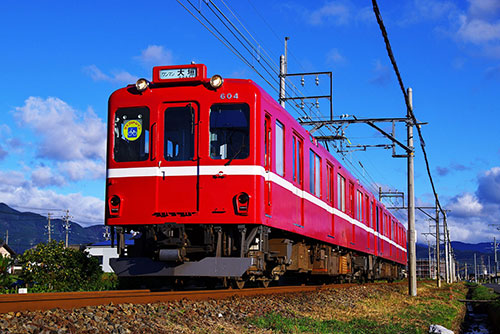
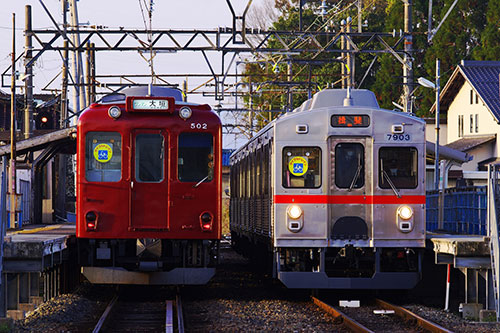
So vertical separation reduces costs, making it a useful alternative for continuing railway services.
Professor Mizutani: In our research, we found that vertical separation is financially beneficial for lines with low train density and vertical integration is advantageous for lines with high train density (Mizutani and Uranishi (2013)). Vertical separation is a good alternative for local lines with low passenger numbers. The local authorities cover the infrastructure costs, which makes it possible to continue operating local lines. However, this is predicted to cause financial difficulties for small local authorities, therefore it is necessary to split the costs for a line between several local authorities. On the other hand, the adjusted costs (e.g., transaction costs among organizations) of maintaining the tracks would greatly increase if Japan's metropolitan lines were changed to a vertical separation system. Therefore, the current system of operation is best as the adjusted costs for revising timetables and introducing new technologies (e.g., regenerative braking systems, where some of the energy from braking can be reused) etc. are shared.
Devising methods to reduce costs and create demand
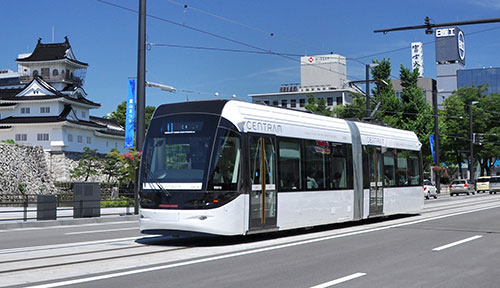
Even if vertical integration is a solution, a variety of plans and efforts are necessary in order to sustain local lines' operation.
Professor Mizutani: Let's consider it in terms of the supply side and demand side. On the supply side, labor costs can conceivably be reduced through labor saving measures (such as single operator trains and unmanned stations) and splitting up companies (e.g., having a local line managed by a separate company). Operation subsidies from local authorities may also be considered even if complete vertical separation isn't feasible.
I think that joint management and integrated operation of train and bus companies is also connected to cost control. There are surprisingly few companies that operate both railways and buses, however transitioning to joint management would certainly reduce various costs. In addition, another effective method is to bring in passengers by modernizing streetcars, such as the successful LRT system in Toyama city. This is best for a city that is spread over a fairly large area though.
What sort of aspects are considered from the demand side?
Professor Mizutani: The demand side is 'how can we get people to use this railway more?' First of all, it's important to get residents to want to take the train line as much as possible. As a prerequisite to this, I would like railway operators to consider usage promotion and strategic fare systems in collaboration with the region, such as the placement of public amenities near stations and of convenient facilities inside stations.
On Kobe municipal subway's Kaigan line, they are currently conducting a social experiment by offering a free pass to children of junior high school age and under. The expectation is that if children can ride the subway for free, then their guardians will purchase tickets in order to accompany them. If users' fare costs are subsidized by local authorities, then this should increase passenger numbers. Morning and evening train schedules that make it easy for high school students to commute by train are also necessary.
The Dual Mode Vehicles (DMV) on the Asa Coast railway, which connects southern Tokushima Prefecture to eastern Kochi Prefecture, have also received attention. Although JR Hokkaido has previously tested DMVs, this is the world's first full scale commercially operated bus-train DMV service. DMVs can travel on roads as well as railway tracks, so they can travel directly from a railway station to a community's bus station on a branch line. This increases user friendliness, which increases the likelihood of passenger numbers going up.
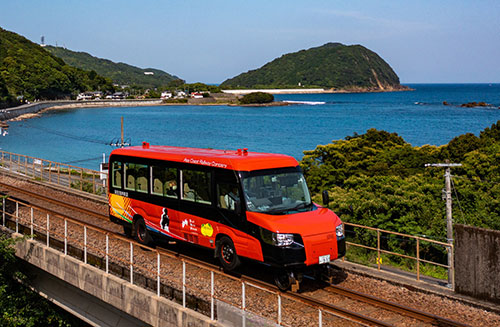
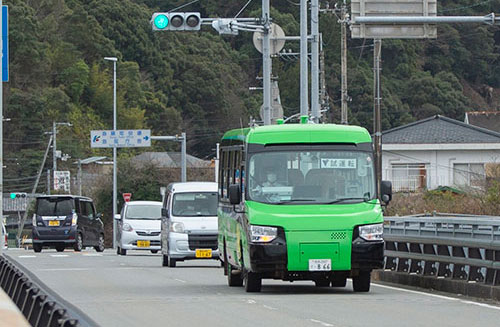
Lastly, let's look at the generation of fundamental demand. Trains are usually ridden by people in order to achieve an aim, be it commuting to work or school, going to hospital, or going shopping. This is called derived demand. Fundamental demand refers to riding the train itself becoming the passenger's aim. A typical example would be steam locomotives, however JR Kyushu presents the appeal of its stylish trains and on-board services (food etc.) to make riding these trains a goal of travel. Various areas of Japan are also implementing plans to attract anime fans, such as a train with a cosmetic design based on the popular anime series 'Neon Genesis Evangelion'. It also seems that tourists from overseas (Taiwan etc.) travel from Shin-Osaka to Kyoto in order to ride the Bullet Train. Demand exists in unexpected places, which can serve as the seeds for numerous ideas.
Furthermore, our research has shown the optimal metropolitan population size to be around 400,000 people (Mizutani et al. (2012)). It is also vital to create environmentally-friendly 'compact cities' where people don't rely on their own car and instead use bicycles or public transport such as trams. I think this would increase demand for local train lines.
A future of auto-driving smart vehicles?
What would happen to a railway line that cannot switch to vertical separation, has cut various costs and has implemented measures to increase demand, yet is unable to keep operating?
Professor Mizutani: As transportation systems, railways are suitable for moving large numbers of people, therefore replacement bus services are one solution if there are few passengers. However, residents dislike replacement bus services due to the anxiety of not knowing when the bus route will be terminated. Railways have tracks which give a sense of security in believing that the service will be continued. Therefore, perhaps it is best to consider public ownership for local lines instead of privatization? It would be difficult for each region to fund the operation of the lines so this would involve creating a public corporation-like organization that would own Japan's local lines. However, this would be funded by the country's treasury so perhaps the Ministry of Finance would dislike the idea.
As automatic driving technology continues to develop rapidly, people living in rural areas may travel by driverless smart vehicles in the future. If small one to two passenger auto-drive vehicles could be implemented with the advancement of AI (artificial intelligence) technology, then individual communities might operate their own means of transportation. This would also change the roles played by existing forms of public transport (trains, buses and taxis etc.).
Ways of protecting local lines
Supply side:
Demand side:






